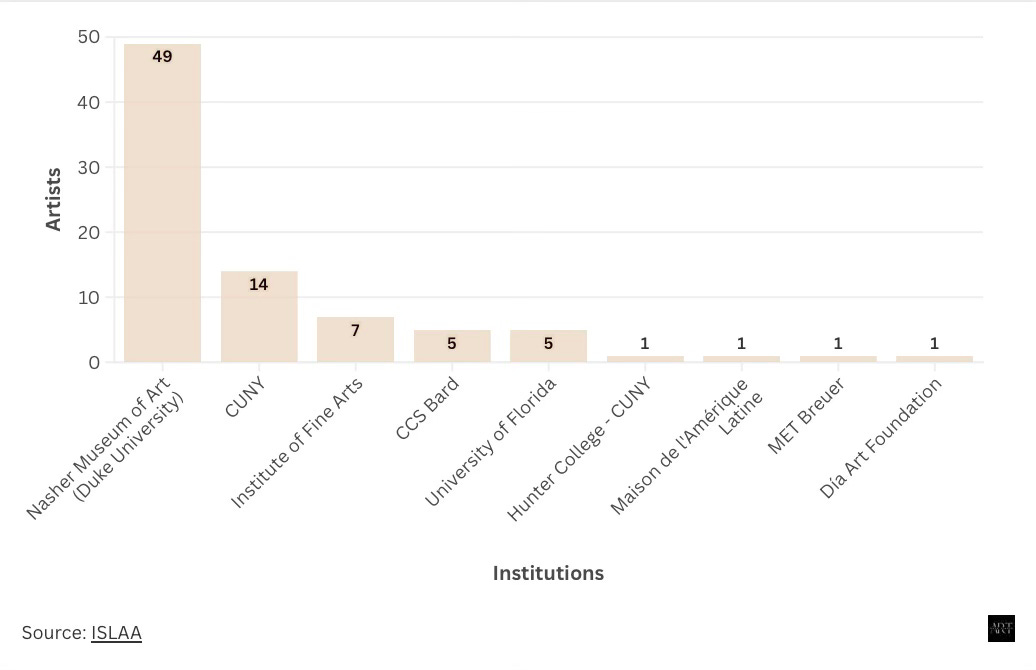An ISLAA converted into an archipelago of Latin American knowledge
Collaborating with academic institutions to organize exhibitions is its best asset and identity seal.
My first visit to the Institute for Studies on Latin American Art (ISLAA) is etched in my memory.
I was welcomed by its founder, Ariel Aisiks, whom I had previously met in Madrid during an ARTEINFORMADO event.
I recall our second in-person meeting, which took place in a relaxed conversation, during which Aisiks tried to explain to me what ISLAA was all about.
Among the many things he shared with me, I noticed a distinct tone when he mentioned why “the greatest asset of the United States was its universities”.
After leaving, I couldn't stop thinking about the emphasis he placed on academic institutions, so eloquently verbalized by the founder of that young New York organization.
As time has gone by, the data has only confirmed what was the key point all along; ‘collaboration with academic institutions’.
Although at different levels, it has always been marked by a desire to cultivate intellectual exchange and collaboration after collaboration with prominent University Museums and Art Institutes, Study Centers, and Foundations that have turned ISLAA into an archipelago of Latin American knowledge.


And without fanfare, quite the contrary, working discreetly, that is, with acumen, ingenuity, and opportunity, the ISLAA has positioned itself as one of the references when it comes to generating knowledge about Latin American art. In a very special way, thanks to its exhibitions. And not only within and outside the competitive New York scene.

This collaborative approach in their unpublished exhibition projects is typically associated with various initiatives such as grants, publications, research, seminars, colloquia, forums, and symposia.
To date, these exhibitions have brought together dozens of artists in collaboration with other institutions. Sometimes, the aim is to recover or reinterpret the work of artists who have passed away, as seen in the case of the late Paraguayan artist Feliciano Centurión. In other instances, the exhibitions showcase an artist's work for the first time in the United States, as was the case with Colombian artist Delcy Morelos, thanks to a new collaboration with the Dia Art Foundation in New York.

Morelos was recognized as 'Artist of the Year' at the 2024 ARTnews Awards, highlighting her innovative artistic practice and recognizing her installation, "El abrazo," at Dia:Chelsea.
Likewise, there are dozens of curators in charge of these exhibitions. Here, it is worth noting how great prominence has been given to young people, thanks to their collaborations with the IFA or the CCS Bard.
A prime example of this is Bernardo Mosqueira, the first ISLAA chief curator, who was awarded the inaugural ISLAA Curatorial Fellowship at the New Museum in New York, from 2021 to 2023.

In 2023, Cultured Magazine highlighted Mosqueira as one of six “visionary curators” in its annual Young Curators list. Also in 2023, APOLLO magazine included him in its 40 Under 40 list as “one of the 10 most inspiring thinkers living in the US.” In November 2024, Observer magazine included him in its list of The Most Influential People in Art.
He has undoubtedly become the most visible face of a team that currently includes around fifteen professionals, whose performance has led ISLAA to exude Latin American knowledge and reach enviable numbers that can be summarized with this last graph.


